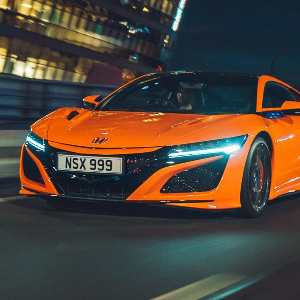
The Blue Oval's big workhorse gets some tough exterior touches and all-wheel-drive thanks to a mechanical limited slip differential but it all comes at a cost
Price: From £48,255, Engine: 2.0 litre EcoBlue diesel, Power: 170hp, Torque 390Nm, 0-60mph: N/A, Top speed: N/A
PROS:
+Plenty of space
+Front of cabin is a nice place to be
+ Quiet and easy to drive
CONS:
-Still has some very van-like touches
-Could do with more torque
-Options get expensive
Verdict: The Ford Transit has long been popular as a commercial vehicle but the addition of stylish touches could see it gain ground with lifestyle set, where there’s currently huge demand for motorhome conversions. Transit Trail is easy to live with and plenty big enough for lofty conversion plans, while the all-wheel-drive capability is sure to be a hit on building sites and other remote working areas.
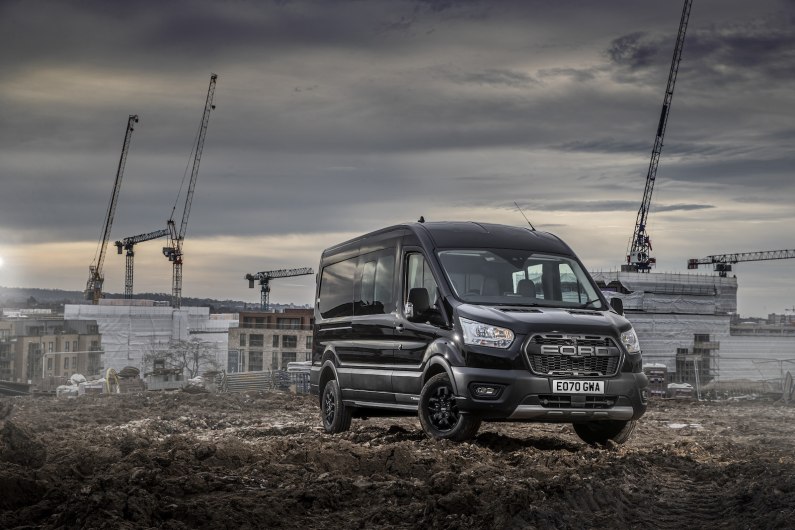
New 2021 Ford Transit Trail review: the five-minute read
It wasn’t so long ago that friends, neighbours and acquaintances would look at you like you had lost your mind if you turned up to a gathering in a full-on, long wheelbase/high-roof commercial vehicle. You were either mad, or had recently swapped a desk job for a career in furniture removals.
But today, particularly as Covid has restricted foreign travel for so many, more private customers are looking towards vans to assist with leisure pursuits or double up as a place to sleep, cook and eat when exploring the furthest reaches of home turf.
The Ford Transit Trail is clearly still aimed at those who frequent the building site, with the marque claiming the limited slip differential allows this van to reach even the toughest jobs, while the overtly masculine bodywork is sure to go down a storm with the high-vis-wearing contingent.
But the leather interior, touchscreen infotainment system and stylish exterior bodywork suggests it is perhaps also gunning for a wider audience. One who sees camper van conversion potential or those who need to lug mountain bikes, motorcycles or surf equipment to far-flung destinations. According to dealers, demand for things like the Volkswagen Crafter, Transporter and Mercedes-Benz Vito has soared during the global pandemic, as more private buyers seek a life on the open road... albeit one that doesn't scrimp on the home luxuries.
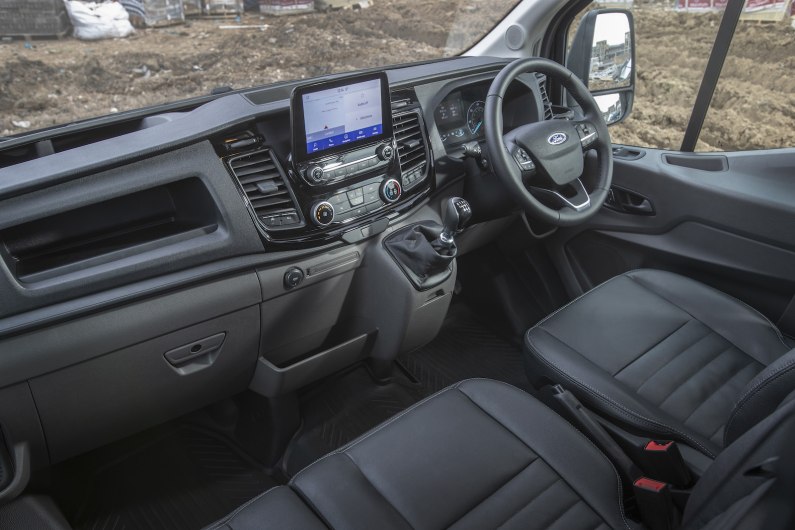
The model driven here is Transit Trail 350, with the longest wheelbase and the second highest roof, so it comes as no surprise that it feels like a large vehicle to pilot on, say, the school run. But that said, the raft of driver assistance tech, inducing reversing camera and sensors, means it doesn’t take long to get used to the additional length. Just bear in mind that the H2 roof height (2533mm) won’t fit in many underground car parks and you’ll have to declare this fact to get it on a ferry.
Ford has added leather to the seats in the front and back, lending the cabin a more premium feel to it, yet the number of clever storage spaces and cubbyholes remains deeply impressive. It’s possible to lose things in one of the myriad storage bins. There’s also air conditioning, a Quickclear heated windscreen, power-foldable door mirrors and auto lighting as standard. Although customers will want to spec the ICE Pack 24 or 25, which adds things like DAB Radio, Apple CarPlay/Android Auto and a neat 8-inch touchscreen courtesy of Ford’s latest Sync 3 technology.
Outside, you get bespoke 16-inch wheels and tough tyres on this model (other sizes are available), additional body cladding, and reinforced sump guard at the front and the huge Ford grille. There's also a list of popping metallic paints, all of which look great, but decked in menacing black with hits bold 3D lettering at the front, it's makes a serious statement on the streets.
Transit Trail is only currently available with the 2.0-litre EcoBlue diesel, which can be found across most of Ford’s commercial vehicle range, but here it comes with the higher 170hp output. It’s a great engine but it does need to be worked quite hard, especially where this larger Transit is concerned. The 170hp unit feels quick in the smaller Transit Custom but it can be a bit sluggish here. The manual gearbox is still lovely, though.
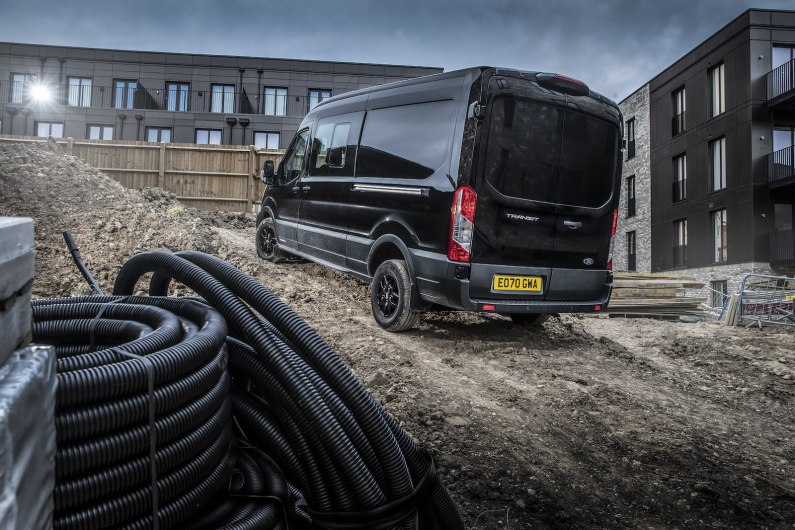
Despite the luxury touches, the Double Cab-in-Van (as tested here) still feels a lot like a commercial vehicle in the back. Rear passengers have to make do with a large bench seat that just so happens to have some leather on it. Not much has been done to isolate the cabin from wind and road noise, while big yellow grab handles to help passengers in and out of the tall side doors make it feel like a minibus.
Arguably higher spec (and more expensive) Volkswagen Crafters are better to drive, although they don’t offer this kind of Crew Cab as standard. However, the latest Mercedes-Benz Sprinter Crew Van does, and it is arguably smarter and more comfortable for rear passengers over longer journeys. Still, the Transit Trail cuts an interesting niche and there's no denying the clever all-wheel-drive tech makes it more capable. It also looks awesome, but at over £51,000 for the model tested here, things start to get very expensive, very quickly.
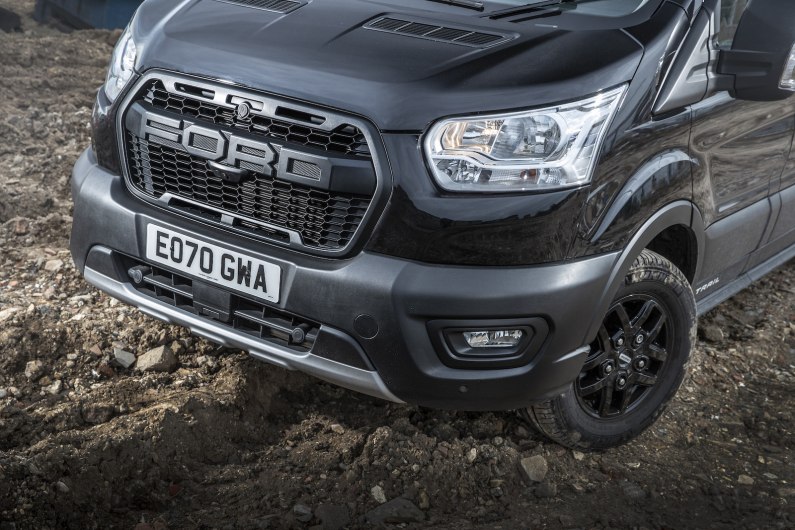
Extended read…
New 2021 Ford Transit Trail interior and infotainment
There is no getting away from the fact that the Transit Trail is still a working vehicle, despite its attempt at a part leather trim. There are storage bins every where and 12V lighter sockets in places that the designers of any normal passenger vehicle wouldn’t dare place them.
It’s comfortable though, and the driver’s seat offers a brilliantly commanding view of the road ahead. There’s also plenty of support for the back and shoulders, making longer journeys really comfortable, while a flip-down arm rest makes it easy to adopt a fully relaxed driving position.
Infotainment is fairly basic on the entry level Trail models, but a £1,475 ICE Pack 25 added an 8-inch touchscreen to this particular model, bringing with it DAB radio, navigation, emergency assistance and access to live Ford apps thanks to an embedded modem. Annoyingly, no CarPlay or Android Auto here, so it was a case of reverting to Ford’s own navigation system, which is clunky at the best of times and useless at the worst.
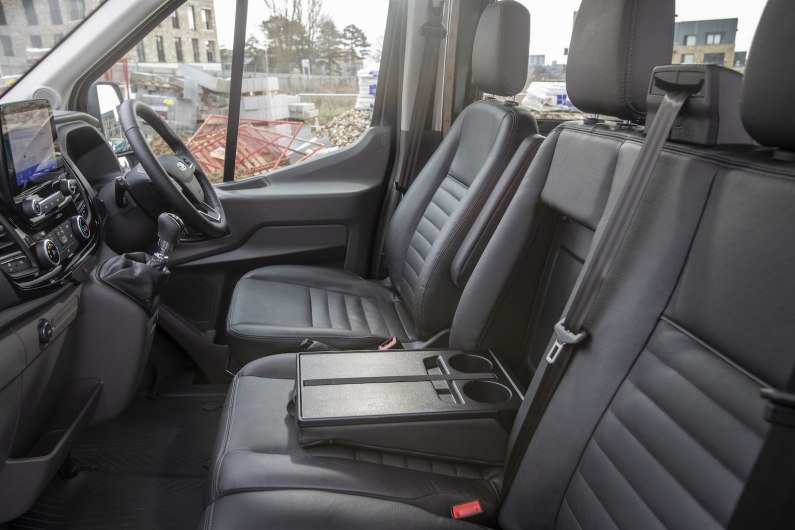
As previously mentioned, the rear of the cabin isn’t the most comfortable place for passengers, as it consists of a large, leather covered three-berth bench with fairly standard amounts of cushioning for posteriors. It's also quite noisy, making conversations hard, and there's no real entertainment pumped towards the rear of the cabin. This test model also had a large bulkhead separating the stowage area, which had a few occupants claiming it made it feel a bit like a police van.
New 2021 Ford Transit Trail practicality
Practicality is the Ford Transit’s middle name and even in this medium-sized model, there’s not much you can’t transport in the back. Max payload is slightly impeded upon in these all-wheel-drive Trail versions, with the absolute max pegged at 1123kg in the L2 H2 sized vehicles.
Opt for the largest L3 H3 Trail models and you can cram a staggering 7.3 cubic metres of kit behind the bulkhead. Granted, I’m not particularly tall but could easily stand up in the back of this mid-sized H2 model without a worry. As conversions go, you could turn this van into a fairly comfortable studio flat, let alone a stylish camper van.
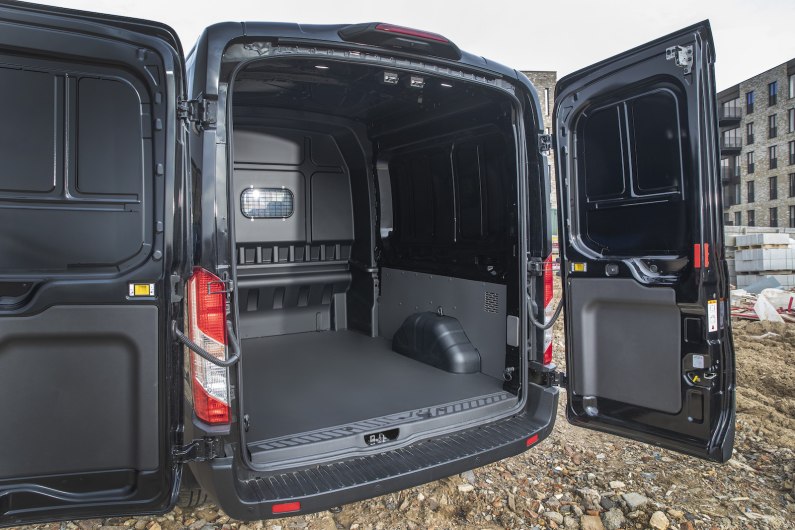
There are plenty of lashing points in the back, for tying down precious cargo, while optional Load Box LEDs on this model meant that said load area was nicely illuminated when in use, so you can work throughout the day and night.
New 2021 Ford Transit Trail engine
There’s only one option with Transit Trail and that’s the 2.0-litre EcoBlue diesel that is used in many of Ford’s commercial vehicles. There’s a bit more choice if you move away from this Trail trim, including hybrids and more powerful outputs, but it’s just the 170hp engine on offer here.
It’s a brilliant little power plant that proves both frugal and powerful enough for most situations, with its 390Nm of torque proving enough to drag the large frame up hills when fully loaded. However, the driver does have to juggle the gearbox a fair bit, as that torque runs out towards the top of the rev range.
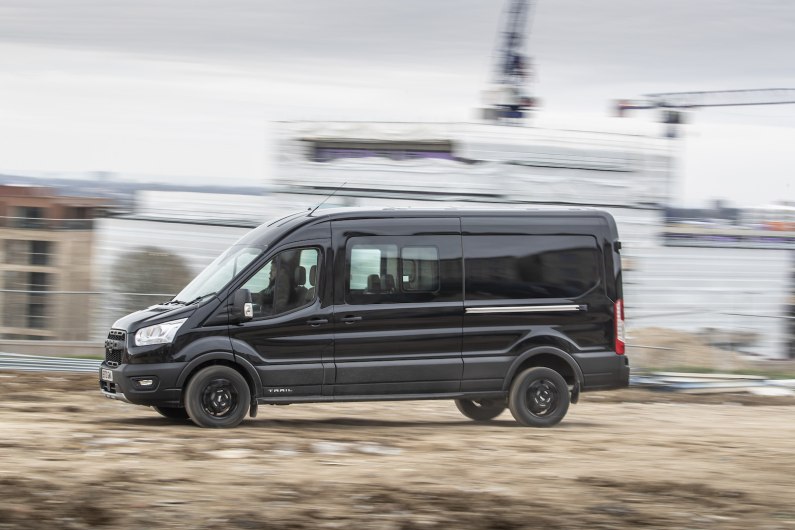
Once up to speed, it feels plenty quick enough and will happily keep ups with motorway traffic with very few complaints. Expect to return around 40mpg on the combined cycle too, as the clever Quaife differential only comes into play when it detects a lack of traction at a wheel, rather than running an all-wheel-drive system all of the time.
New 2021 Ford Transit Trail driving
Although not the fastest van out there (a Mercedes-Benz Sprinter has this Transit licked), Ford’s Transit Trail is quiet and comfortable to drive, boasting enough power to keep up with faster moving motorway traffic and enough grunt hustle up to speed quickly on country roads.
There’s a fair amount of gear-juggling to contend with, but the gearbox is lovely and the clutch beautifully light and easy to operate. The steering is also very much ion the light side, which is great around town but handling isn’t really the van’s strong point. The sheer height of the H2 and H3 models means it rolls a fair amount when pushed through corners and catches the odd sidewind on exposed stretches of road. However, the limited slip differential does a great job of throwing traction to the wheel that needs it most.
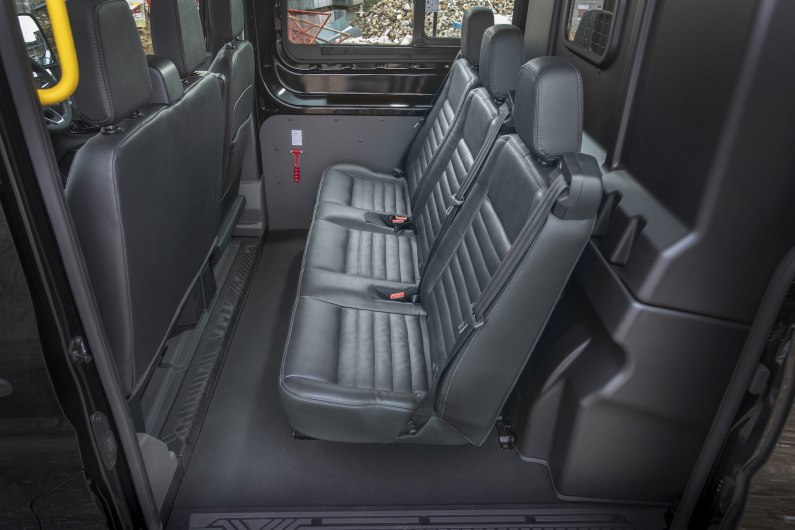
I didn’t have a chance to get it properly muddy, but it dealt with loose gravel surfaces with ease, while the chunkier tyres and decent suspension travel meant that I felt confident taking not over lumpier forest paths or pointing it down steep gravel ways that would usually make a van driver wince. If you're delivering parcels to the remotest parts of Wales, this could be exactly the thing you need.
